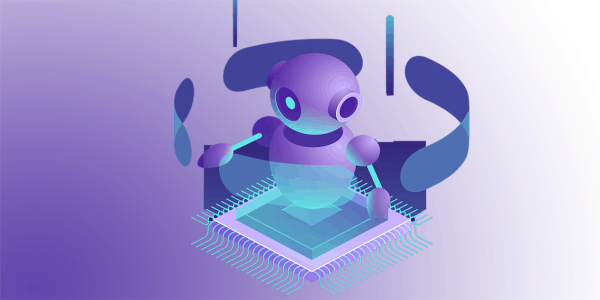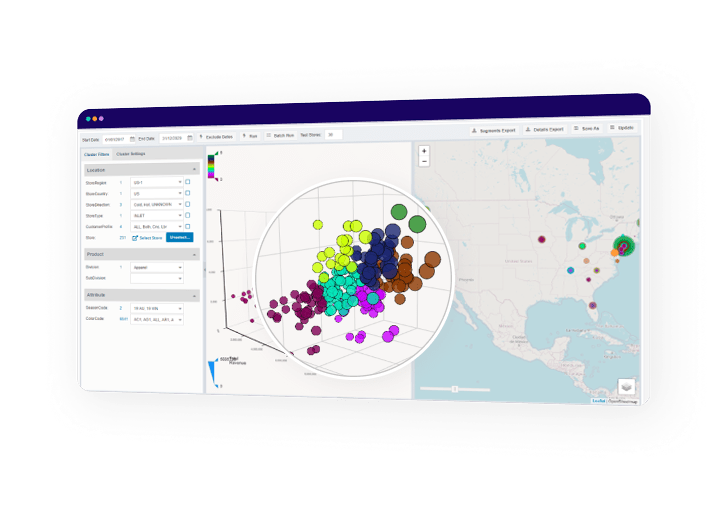Companies like Amazon, Walmart, Alibaba, and Zara are leading the path in the use of technology and advanced analytics in managing supply chains. Artificial Intelligence (AI) and Machine Learning (ML) are hot topics being discussed in the retail world. Across the globe, whether they are grocery, mass merchant, or fashion, retailers are looking for ways to make faster and smarter decisions using this technology. Among the leading applications of AI & ML in planning are forecasting and replenishment processes.
1. Getting closer to the customer
This is now part of everyday conversation, and those who are pushing the envelope on that front know it takes more than just getting customer insights reports out of CRM systems.
To turn those insights into actions; delight the customers and ultimately make an impact on the bottom line, companies need smarter and more agile supply chain capabilities.
For retailers, customer-centric inventory management is the key to maximizing sales potential. To do that, they need smarter and more agile forecasting and replenishment systems that can address fluctuations and variances in customer preferences at more and more granular levels. For brick-and-mortar stores, this means getting down to the location level, for e-commerce, this means getting down the customer segment and even to the individual customer level.
2. Agile forecasting & replenishment
When asked about the top organizational inhibitors preventing retailers from innovating, the RSR research respondents called legacy technologies as the main challenge. No wonder, retailers determined to rise to the competitive challenges are constantly looking for ways to improve their technological capabilities.
According to CBInsights research, funding to supply chain & logistics tech continued to rise. So what of the new technologies makes it worthwhile to spend time and effort to upgrade from legacy systems?
3. AI & ML for Retailers
According to Gartner’s Market Guide*, “Artificial intelligence (AI) offers numerous benefits in demand planning”:
- AI applies advanced analysis and logic-based techniques to interpret events, support and automate decisions and take actions.
- AI learns by emulating human performance to find better answers to the same problem when faced with it repeatedly.
- AI can come to its conclusions by navigating through different sets of data and drawing correlations.
- AI can maneuver through lots of data and pick only the meaningful relationships that humans may not be able to find.”
AI and Machine-learning are quickly becoming differentiating capabilities for Demand Planning and Replenishment solutions.
As retailers explore these types of capabilities, they need to keep their focus on the business impacts. Ultimately, these need to serve their business goals and priorities:
- Keep up with customer demands and delight customers
- Improve service levels
- Reduce inventory and/or logistics costs
- Improve the speed in decision-making and fuel innovation
Technology is an enabler to get the most out of the Retail resources, data, people, and processes. If you are looking to benefit from smarter and more agile forecasting and replenishment technology, then consider Solvoyo as your solution partner.
Tackle Retail Challenges with the Right Supply Chain Planning Platform
As a retailer; the rapidly changing market can pose a significant challenge to your supply chain planning.
Solvoyo’s advanced analytics and machine learning capabilities have enabled multinational retailers to sense demand changes, optimize inventory levels, minimize total cost to serve, and collaborate with external partners.
With Solvoyo’s autonomous planning capabilities, you can manage your supply chains more effectively in light of uncertainty, avoid stock-outs, lower costs, and keep your customers happy while supporting a more sustainable business model.
The 2022 Gartner Market Guide for Retail Forecasting, Allocation, and Replenishment Solutions* has recognized Solvoyo as a Representative Vendor.
Learn more about Solvoyo Digital Platform.
*Gartner “Market Guide for Retail Forecasting, Allocation, and Replenishment Solutions” Janet Suleski, Mike Griswold, 9 August 2022
Gartner does not endorse any vendor, product, or service depicted in its research publications, and does not advise technology users to select only those vendors with the highest ratings or other designation. Gartner’s research publications consist of the opinions of Gartner’s research organization and should not be construed as statements of fact. Gartner disclaims all warranties, expressed or implied, concerning this research, including any warranties of merchantability or fitness for a particular purpose.









